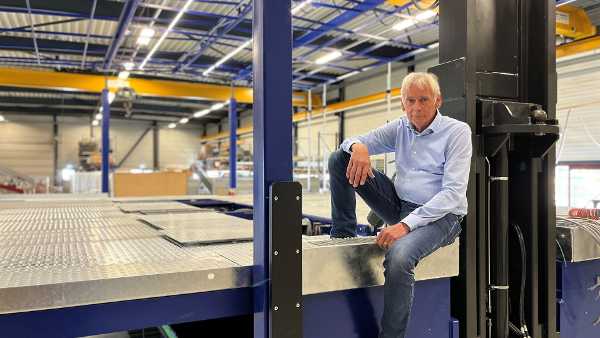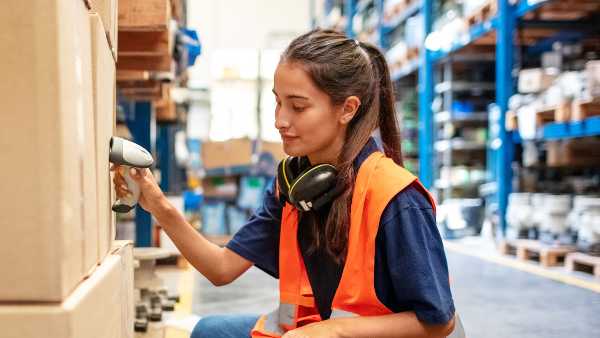Intra-EU exports in practice

- Sandra Visser-Meijer
- How to
- Edited 4 November 2025
- 5 min
- Managing and growing
- International
In his quest for new export markets, Kinkelder’s export manager Ronald Wolkenfelt always takes the same tried and tested approach, reviewing old offers, calling people he met at trade fairs, and asking businesses about local market prices. “But lots of customers find us by visiting our website, too.”
Although there is free movement of goods in the EU, different countries have different rules. Wolkenfelt shares his experiences with exporting within the EU. He is responsible for exports to Northern and Eastern Europe, among others areas.
Researching the market
Kinkelder BV develops and produces industrial circular saw blades in its factory in Zevenaar, which it sells to the automotive industry and metal processing industry. Wolkenfelt has a fixed approach when conducting market research on new export markets, with trade journals serving as his main source of market information. “I also ask companies in the market that I have my eye on for local market prices. This could be a company that I made a quote for in the past, for instance.”
Opportunities
When a country shows interest in the products, further market research follows. Wolkenfelt looks at previous requests and interests from that country. He checks his trade fair contacts and uses overviews of steel manufacturers there. “Kinkelder is an established name,” Wolkenfelt explains. “so customers often come looking for us.”
Local product requirements
Different product requirements may apply in new markets. For example, the company's saw blades have to meet the EU’s or EEA’s product requirements with regard to safety, health, and the environment. There are no special local requirements for these products. Local Product Contact Points know more about product requirements and standards in other EU countries.
Market approach
Kinkelder works in the industrial market and has a versatile export model: “We have our own branch , work with distributors, and deliver directly to end customers in countries where we do not have a branch of our own. We only open our own branch if our potential sales in the country in question are sufficiently promising.”
Large businesses often require their branches to go through the company’s central purchasing department.
Wolkenfelt has noticed that the market is changing. “Large companies that are headquartered in a particular country require their branches to go through the company’s central purchasing department. We then deliver the purchase orders directly to local branches in EU countries, which can lead to tense situations with local distributors. If the margins allow, the distributor will also get a share in order to keep everyone satisfied and guarantee local support.”
Finding partners and customers
The company knows the market inside and out and finds many of its customers and partners through so-called OEMs, or Original Equipment Manufacturers. These companies supply machinery used to produce parts like seats or headrests for the automotive industry. “We also have a subscription to the 'Tube and Pipe Technology' magazine and Simdex, an organisation with a directory of global pipeline projects and metal tube suppliers.”
By visiting or participating in trade fairs, you often find foreign parties Or if you join an inbound or outbound trade mission. Check foreign business partners before signing a contract. Wolkenfelt does not just appoint any distributor. "First we make a choice on paper. The potential partner fills in a questionnaire. Then visits take place back and forth. If the feeling on both sides remains good, the distributor is given a trial period."
Arranging transportation
In the EU, road transport is particularly common, because lorries are such a fast and smooth means of transportation. Incoterms® govern the seller’s and buyer’s obligations surrounding transportation, with Kinkelder usually preferring Incoterm® FCA (Free Carrier) for its export shipments. “After we transfer the shipment, our customer bears all transportation costs, including the risk of loss or damage to the goods. Our customers often pick their own carrier and determine whether to take out transport insurance.”
We check our customer's VAT ID on the VIES website.
Export documents
For exports to other EU countries, the only documents you need are usually a packing slip, invoice, and transportation documents. There is free movement of goods in the EU, so you will not need to submit an export declaration to customs. In some cases, customs does investigate intra-EU product shipments, especially if the products fall under safety, health, economic and environmental (VGEM) legislation and have to be accompanied by additional documents.
VAT on intra-EU supplies
Legally speaking, you do not truly ‘export’ goods when you sell them to companies subject to VAT within the EU. Instead, these sales are called intra-community supplies while your foreign customers are making an intra-community acquisition. The requirements for charging a 0% VAT rate for an intra-community supply include the following:
-
Goods must physically cross the border from one EU country to another. In other words, they are not allowed to stay in the Netherlands and have to leave the country for another EU country.
-
The customer needs a valid VAT number and must file VAT returns in the other EU country.
-
The supplier or customer must arrange the transportation of the products to the other EU country.
There are exceptions (Belastingdienst, in Dutch) to these rules. For example, ABC deliveries, new vehicles, sales to private individuals, and margin goods. When in doubt, use this tool made by the Dutch tax authorities (in Dutch).
Your EU customers get an invoice with 0% VAT and file a local VAT return. “We check our client's VAT identification number on the VIES website to check that we are dealing with a real company.”
Setting an export price
Setting a good selling price for export products is a key part of negotiations. The cost price of your product will include production costs, storage costs, marketing costs, transportation costs, and more. Product quality and the market position you want to occupy also play a role. And of course, you also want to make a profit.
Wolkenfelt explains the company’s pricing strategy: The circular saw blades are in the higher price segment. Kinkelder also tunes the saws at their customers' premises. This gives the saw blades a longer life and better performance. That makes up for the higher price. ‘In the end, it is more cost effective for our customer,’ he says.
Lay down agreements in writing
Quotations usually sum up all the agreements made between the two parties involved, often with reference to general terms and conditions. Or the terms and conditions are an attachment to the quotation.
Kinkelder uses Metaalunie’s general terms and conditions. “Delivery times on steel are long and prices fluctuate from day to day. Our quotations always had a validity period of 30 days, but we have now shortened them to a few days, depending on what the market is doing. Our terms and conditions now state that we can adjust prices at the time of delivery in the event of unforeseen circumstances.”
Contracts with partners
You can also choose to lay down agreements in a contract. A customer accepting a quotation you have issued, is a valid agreement. Kinkelder has a written distribution agreement with most of its distributors. “We have basic contracts for all our partners and tailor them to the situation at hand. You have to draw up contracts together, because both parties have to endorse the agreements made. On top of that, all our price lists refer to the Incoterms® and our delivery and payment terms.”
Getting paid
Exporters want to make sure they get paid, preferably before shipping. Banks provide useful information on the most suitable payment method for a particular transaction. Kinkelder has new customers pay in advance. “If both parties like how things are going, we make long-term agreements, such as paying 50% in advance and 50% on delivery. We give long-term customers invoices with a payment term of 30 or 60 days.”


